A few years ago, when a car had the "Turbo" badge or designation, it was seen with a little more respect. Today that has already lost much value, as now even the 1.0 go with turbo, and it is no longer such a differential character. This time, I present the Hyundai i30 Turbo, a name reserved for the most powerful of the range. It is the most daring thing the brand has done in this segment after the Hyundai Veloster Turbo.
At first glance, it's a car that is quite striking, the question we have to ask ourselves is does that translate into a sparkling drive? Before I answer that question, I'll tell you one thing: I've tried to leave all my prejudices with the handbrake on when it comes to talking about this car. I'll rate it against the "compacts with lots of horsepower" I've driven before.
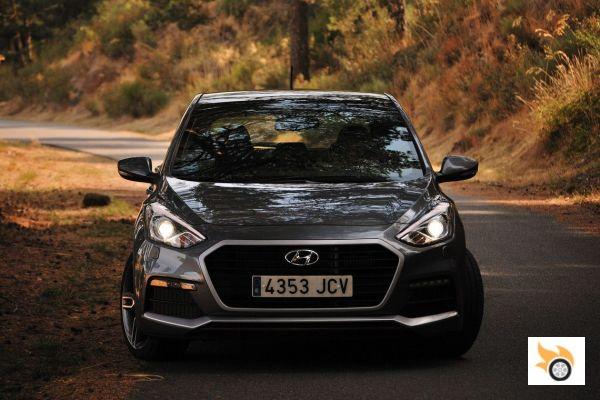
Design
The designers didn't want the Hyundai i30 Turbo to look too similar to its range-topping siblings, and the trained eye can easily tell. It has specific bumpers, the front has a red stripe under the hexagonal grille, and the rear has a faux aerodynamic diffuser with dual real exhaust outlets. The tyres are Hankook Ventus Prime² 225/40 R18. The current generation i30 is in the second half of its life cycle, it received a restyling recently. This version did not exist before, and is the most aggressive to date of the South Korean compact.
In Spain it is only sold with five doors, although it exists with three.
We can consider it as the "equivalent" of the Kia pro_cee'd GT, which is more powerful. Its cousin only markets the racy version with three doors, although you can choose a similar aesthetic treatment for the other two bodies, with more civilized engines. The i30 has a more conservative approach, and also a more rational one. Kia is a brand with a slightly more jovial approach.
In well-lit conditions, it's the lower LED lights that take centre stage, where the fog lights would be. Switching on the low beams, LED stripes illuminate in what we can call their "eyebrows". These headlights are cornering directional, so they help a little bit with cornering when we're going to do dark things on curvy roads when everyone else is asleep. Only one body color is free, according to the configurator, the Ara Blue. Except for white, which is only 150 euros overpriced, the others are available for 450 euros, like the grey of our test unit.
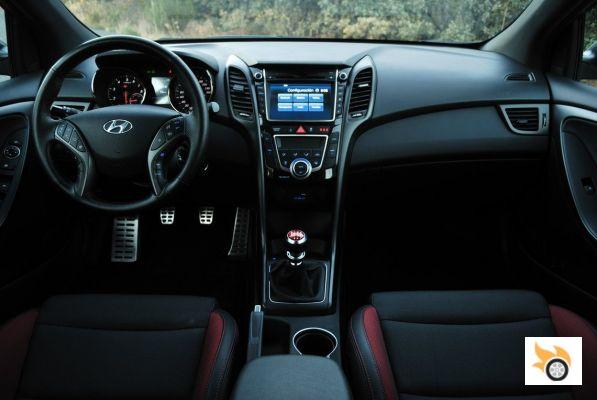
Cabin
Let's move on to the interior. There's a bit of a sporty atmosphere, almost everything is dark, black predominates, even in the headliner. Red stitching provides contrast on the steering wheel, upholstery and gear lever cover. The knob is specific to this version of the i30, smaller, but is the same as on the Veloster Turbo, only that one is gray. The seats, with a reinforced contour, are a combination of leather and textile upholstery. In the area of the pedals, we find aluminum, something almost essential.
Essentially, the Hyundai i30 Turbo is exactly the same inside as its petrol and diesel siblings of lower performance. The steering wheel, for example, stands out, as I found it to be enormous. In the Kia pro_cee'd GT there is a differentiated design, trimmed at the bottom, in the i30 Turbo it reminds me of a ship's rudder. On the dashboard, the needles point downwards when they are at zero, and the numbering is arranged differently compared to the range siblings. Like the "refreshed" i30, this model benefits from improved materials and insulation quality.
All the equipment seen in the images comes as standard, with two exceptions, the panoramic sunroof (800 euros) and the touchscreen navigator (1,000 euros). As a good compact Asian brand, the options are the minimum and essential. The i30 Turbo has only one equipment variant, the one you're looking at. Lentils, take them or leave them. Curiously, the first i30 Turbo that the specialized press tested were considerably more equipped, ours didn't have ventilated/heated seats, nor advanced driving aids, among others.
The front seats are comfortable, as are the rear seats. The space is well distributed, especially to extend the legs, according to the manufacturer is one of the most livable in the category. In the central rear seat, as usual, the comfort is not the same because of the folding table with double cup holders, and it is also narrower. They have not complicated life by placing some edges to improve the lateral support of these occupants, nor have they thought of putting the seat belts of another color. As usual, under 1.75 meters, we can go to our wide.
On a practical level, it's a very rational car, with spaces all over the front to leave objects. In the doors you can fit one and a half litre bottles, in the central box there is plenty of space, and in front of the gear lever as well. The glove box is cooled and illuminated, and has space because it does NOT have the multimedia system manuals in there. They go in the trunk, and since there are so many languages, it's a considerable brick. Overall, you get a perception of quality, with padded plastics where they need to go.
There's little to say about the boot - 378 litres of capacity without folding the seats, and just over 1,300 litres if you fold them down. You can get a fairly flat cargo area, as the lower part of the bench seat folds 90 degrees forward. The hooks for hanging small bags are appreciated. Under the trunk surface there is no spare tire, but a puncture kit, triangles and the manuals. The floor can be opened either on the sides only - look at the textile handles - or completely.
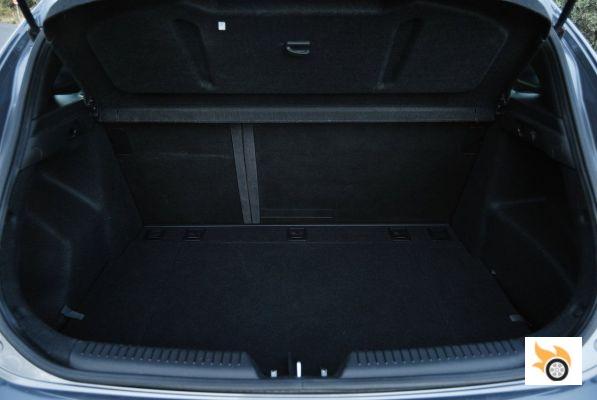
Technology
The main distinguishing feature of this i30 is the engine, the 1.6 T-GDi with 186 hp, known from the Veloster Turbo. If we compare it with other high-end generalist sports compacts, it is not surprising, the figures are more around 200 hp or above, and the 180 range is more common for petrol (diesel) or sub-GTi, such as the Leon 1.8 TSI FR or the 308 THP GT. In the Kia pro_cee'd this engine is more lively and delivers 204 hp. The performance is correct, not dazzling, about 7.3 kg per horsepower.
In terms of maximum torque, we have 265 Nm between 1,500 and 4,500 RPM. It combines turbocharging with direct petrol injection, hence the acronym. Homologates a consumption of 7.3 l/100 km, already pulling high at this point in the film, but of course, homologations are homologations. It's a Hyundai/Kia engine, we won't find it in other manufacturers. It lacks Stop&Start system, it would help to homologate less in urban areas.
The suspension is independent on all four wheels
If we compare it with a normal i30, the suspension elements are a bit stiffer, and the body has 5 mm less ground clearance. The steering has a slight tweak to make it more direct, and it has the Flex Steer system to offer three different levels of hardness. As for the brakes, they are nothing special, 300 mm ventilated front discs and 284 mm solid discs at the rear. All in all, it doesn't sound like we're talking about a hot rod. Hyundai is proud to say that this car has been tuned at the Nürburgring, but not with the aim of achieving records.
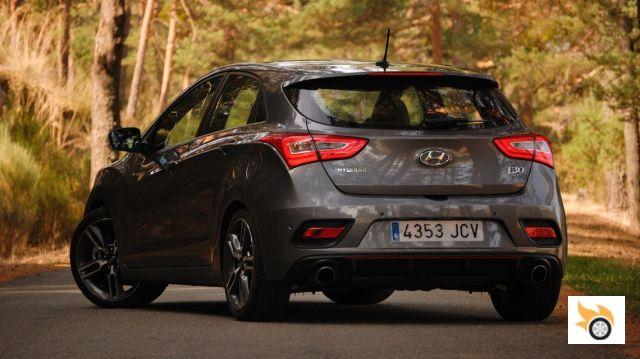
Driving
So, I've already talked a lot of theory, and now comes the practical part. The first feeling you get when driving the Hyundai i30 Turbo is that it's a car with a rather quiet soul. If you compare it to, say, the previous generation (FN) Honda Civic Type-R, it's like comparing a guy who likes to go running with a guy who's done several Ironmans. It doesn't seem like the right car to seduce a petrolhead. Hyundai will have to come out with something fatter for that kind of audience.
The sporty image remains... just an image. The exhaust sound is nothing special, neither at idle, nor at high revs. They could have at least embellished it with a falsetto sound through the speakers, it would be a step forward. It's a squeaky engine when revving high, lots of intake noise, but it leaves a bittersweet sensation if we are looking for a more "Pistonudo" character. The sound of a 2.0 16v naturally aspirated of the Euro 4 generation would be more interesting, it didn't cost so much to put a slightly louder exhaust line.
If we are looking for an exciting car that will make us sweat adrenaline, we will be wrong.
Let's talk about performance. It sprints from 0 to 100 km/h in 8 seconds, and it can reach top speeds, namely 219 km/h. In the recovery test from 80 to 120 km/h in fourth gear, it's slightly under 8 seconds, not bad. So far, so good, but I haven't told you everything. It's a car that "walks" when we put the accelerator pedal to the floor, the rest of the time it's a bit of a Flanders. If we don't know that, it will give us the feeling that the car is a bit heavy. It asks for kick-down, as if it were an automatic.
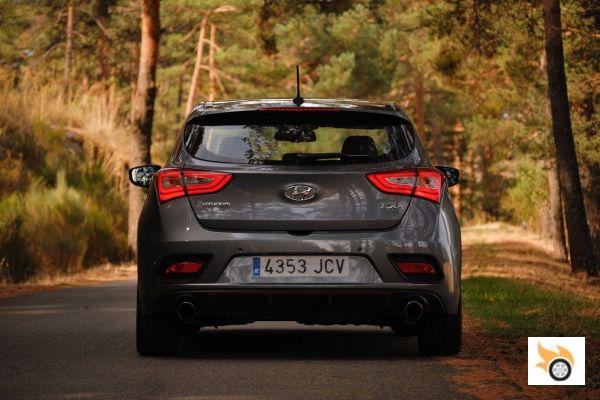
Under normal conditions, the i30 Turbo has a good footprint, little sway, and goes where we ask it to go. If we push things a bit too hard, it will show an understeering character at the limit, where the electronic aids already have to act to avoid more wheelspin. It lacks self-locking, both real and electronic, the interventions are as accurate as those of the ESP of my Prius. The aids can be completely disconnected if we want to. The choice of tyres seems to me to be adequate, especially for its low drift.
It's not easy to get sudden or unpredictable reactions, it's a car designed more to go at 180 km/h on the highway than to take second gear hairpins with the foot at full throttle. It feels more comfortable on the straights or in fast corners, but in the twisty sections the fun is missing. It lacks character. However, it overtakes very well, which is to be expected from an engine of this power. It must also be said that when it starts to go, it is easy to correct the situation if we do not exceed the limits of physics.
It can be likened to a powerful compact with a naturally aspirated engine like those seen a few years ago, such as the Citroën C4 VTS, only its engine has more bass. The power delivery is very linear from 1,500 RPM, the torque curve is square. It's so linear that it feels like a naturally aspirated engine. As a turbo engine it's not explosive at all, although at least you can hear a slight hiss when you put the pedal to the metal for several seconds at a time. That's something.
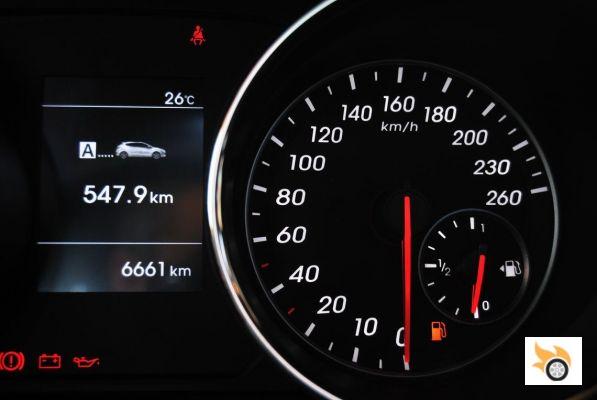
The gears are longer than a day without bread, although objectively they are not too long, they seem to be. The gear lever has a mechanical feel that gives a good sensation, and it's precise when making quick, short gear changes. We can't say the same about the steering, which is not very informative. I drove almost all the time with the "Sport" program, with the other two programs, softer, I barely knew what was going on under the wheels, as in a Renault Mégane II.
I would have liked a smaller steering wheel for an even more direct and sporty feel. The tyres hold up very well, but the brakes are a bit weak under demanding use. Just look at how helpless and small the rear discs seem inside the 18-inch wheels. There's no need to drive with the Guardia Civil in the rear view mirror trying to stop us, with a spirited driving of 30 degrees or more, the car is going to be a bit short.
I have a more funky memory of the Hyundai Veloster Turbo, a bit simpler, and also more expensive. Maybe I'm just too burnt out by now, but I think most drivers, those who don't go that hard, will find the whole thing quite balanced. Overall, it's a politically correct car, like almost everything this brand makes. The burned out will want something with more personality and punch.
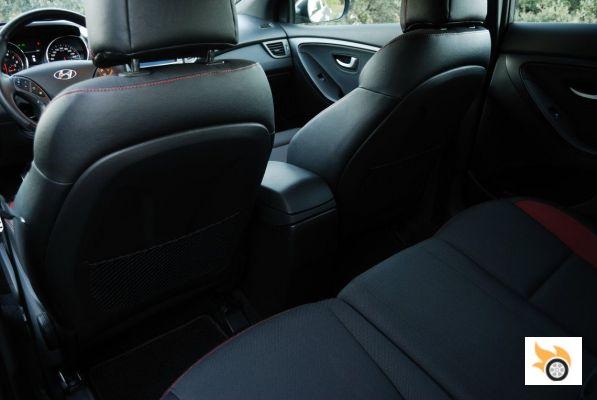
Conclusions
By now I think it's clear to everyone that the car's aesthetics don't translate into equivalent performance. It is very usable -despite the power- on a day to day basis, the suspension will hardly seem uncomfortable to anyone, unless you are a senior citizen or have neck problems. There is a detail that spoils a little this character for every day, the consumption. I usually say that if a car consumes, it has to run. The most normal thing is to do to this car averages of 9 liters, and have to go to refuel before 600 kilometers.
My averages were between 8 and 10 l/100 km, going below that range is very difficult; you'd have to drive it like the 1.4 CVVT 100 hp. For that trip, no panniers were needed. It doesn't run that fast for what it spends, so it's a bit disappointing. Nowadays, for that level of fuel consumption, you'd expect better fuel economy. Technologically it is not an outdated engine, it is not a heavy car, nor with bad aerodynamics.
In its favor we must say that they ask for it 21,580 euros, with only apply the promotional discount in force.
The car can improve in sporty character, without the need to be something radical. But as I said, Hyundai is a brand with a strong pragmatic character, and this car is just that, pragmatism, but with 186 hp. You'd find a first generation SEAT Leon FR much more fun, and the power was similar. For someone over 40 I'm sure the car is fine, but for a burnout, it lacks character. You also have to consider who is the typical customer for this type of engine in the C-segment.
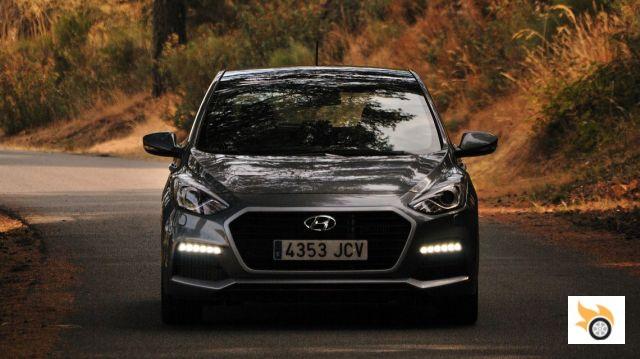
As a "first approach" to the GTi concept, it has fallen a little behind. It has lacked to round the product a little more: some interior details, the 204 hp that is possible to get to the block, an exhaust sound more in line with the aspirations of the car or more equipment. We know that Hyundai wants to excite and win over customers who previously would not even think of buying a car with this shield, they are not exactly on the wrong track, but it lacks things.

























